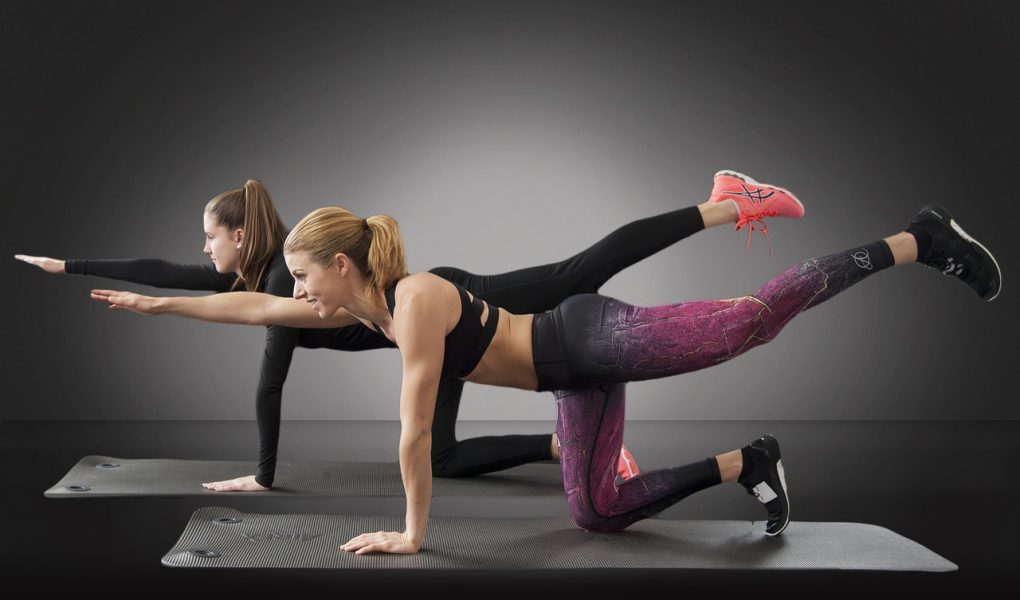The fitness industry has seen tremendous growth over the last few decades.
According to the International Health, Racquet & Sportsclub Association (IHRSA), the fitness industry is worth $100 billion worldwide, and this number is expected to grow in the coming years.
With the rise of technology, gym owners are looking for new ways to keep up with their competition and provide better services to their clients.
One of the ways they are doing this is by incorporating chatbots into their businesses.
In this blog post, we will discuss how chatbots are changing the game for gym owners and the future of fitness.
What are Chatbots?
A chatbot is a computer program that simulates human conversation through artificial intelligence (AI). Chatbots use natural language processing (NLP) to understand and respond to users’ requests. They’re used in a variety of industries, including customer service, e-commerce, and healthcare.
How Chatbots are Changing the Game for Gym Owners.
1. Improved Customer Service.
Chatbots are revolutionizing customer service in the fitness industry. With a chatbot, gym owners can provide 24/7 customer service to their clients. Clients can ask questions, book classes, and get advice from a chatbot at any time of the day or night. This improves customer satisfaction and helps gym owners retain clients.
2. Personalized Workout Plans.
Chatbots can help gym owners provide personalized workout plans to their clients. By asking clients about their fitness goals, fitness level, and workout preferences, chatbots can create customized workout plans for each individual client. This helps clients achieve their goals more efficiently and increases their motivation to stick to their workout plan.
3. Automated Booking System.
Chatbots can also automate the booking system for gym classes. Clients can use a chatbot to book a class, check availability, and receive confirmation of their booking. This reduces the workload for gym staff and makes the booking process more efficient for clients.
4. Virtual Coaching.
With the rise of virtual coaching, gym owners can use chatbots to provide virtual coaching services to their clients. Chatbots can provide workout advice, motivational messages, and accountability check-ins to clients who are unable to attend in-person coaching sessions.
This helps gym owners expand their reach and provide services to clients who are not able to visit the gym in person.
5. Cost-Effective Solution
Chatbots are a cost-effective solution for gym owners. Instead of hiring additional staff to handle customer service, booking, and coaching, gym owners can use a chatbot to automate these tasks. This reduces labor costs and increases the efficiency of the gym.
The Future of Fitness.
The use of chatbots in the fitness industry is just the beginning. As technology continues to advance, we can expect to see even more changes in the fitness industry. Here are some of the trends that we can expect to see in the future of fitness:
1. Virtual Reality Workouts.
Virtual reality (VR) workouts are a trend that is rapidly gaining popularity in the fitness industry. With VR technology, clients can immerse themselves in a virtual environment that simulates a variety of different workout settings, from a beach to a mountain top.
This technology can make workouts more engaging and enjoyable, helping to motivate clients to stick to their fitness routines.
One of the main benefits of VR workouts is that they can provide a sense of novelty and excitement that traditional workouts may lack. This can help to prevent boredom and keep clients engaged in their fitness routines.
VR workouts can also provide a more varied and challenging workout experience by simulating different environments and workout types, such as boxing or yoga.
Another benefit of VR workouts is that they can provide a more immersive experience than traditional workouts.
By simulating a realistic environment, clients can feel as though they are really running on a beach or hiking up a mountain.
This can help to reduce stress and increase feelings of well-being, making the workout experience more enjoyable and rewarding.
In addition, VR workouts can be a useful tool for clients who are intimidated by traditional gym environments or who have limited access to gym facilities. By providing a virtual workout environment, clients can exercise in the comfort of their own homes without feeling self-conscious or overwhelmed by a crowded gym.
As VR technology continues to advance, we can expect to see even more innovative uses for it in the fitness industry. For example, VR technology could be used to create interactive group workout classes that simulate a real-life gym environment. This could help to increase feelings of social connection and provide a more engaging workout experience.
Overall, VR workouts are a promising trend in the future of fitness. By providing a more engaging and immersive workout experience, they can help to motivate clients to stick to their fitness routines and achieve their goals.
2. Wearable Technology.
Wearable technology is another trend that we can expect to see in the future of fitness.
Wearable technology, such as fitness trackers and smartwatches, can provide clients with real-time data about their workouts, including heart rate, calories burned, and distance covered. This data can help clients track their progress and make adjustments to their workout plan.
3. AI-Powered Fitness Equipment.
AI-powered fitness equipment is another trend that we can expect to see in the future of fitness. This equipment will use AI to provide clients with a more personalized workout experience. For example, AI-powered treadmills can adjust the speed and incline based on a client’s fitness level and goals. They can also provide real-time feedback on the client’s form and offer suggestions for improvement.
AI-powered strength training equipment can also adjust the resistance based on the client’s strength level and goals. It can track the number of reps and sets completed, monitor form, and offer feedback on technique.
The data collected by AI-powered fitness equipment can also be used to create personalized workout plans for clients. By analyzing a client’s performance data, the AI can identify areas for improvement and create a plan that is tailored to their individual needs and goals.
Overall, AI-powered fitness equipment can provide a more personalized and effective workout experience for clients, helping them achieve their goals more efficiently and reducing the risk of injury. As this technology becomes more advanced, we can expect to see it integrated into more gyms and fitness studios.
4. Personalized Nutrition Plans.
Personalized nutrition plans are becoming increasingly popular in the fitness industry, and AI is playing a key role in their development. By analyzing a client’s dietary habits and nutritional needs, AI-powered software can provide personalized recommendations for meal plans and supplements, tailored to their individual goals and preferences.
One of the main benefits of personalized nutrition plans is that they can help clients achieve their fitness goals more efficiently. By providing a targeted nutrition plan that is tailored to their individual needs, clients can optimize their diet to support their workout routine and achieve their desired outcomes, whether that is building muscle, losing weight, or increasing endurance.
Personalized nutrition plans can also be beneficial for clients with specific dietary requirements or restrictions. For example, clients with food allergies or intolerances may struggle to find suitable meal options, but with a personalized nutrition plan, they can receive recommendations for foods that are safe for them to eat.
AI-powered software can also help to monitor and track a client’s nutritional intake, making it easier to identify areas for improvement and adjust the nutrition plan accordingly. This can be especially useful for clients who are trying to lose weight, as tracking calories and macronutrient ratios can help to ensure they are in a calorie deficit.
Personalized nutrition plans offer a more targeted and efficient approach to nutrition, helping clients achieve their fitness goals more effectively.
As AI continues to advance, we can expect to see even more innovative uses for personalized nutrition plans, such as the integration of genetic testing and microbiome analysis to provide even more tailored recommendations.
5. Gamification.
Gamification is another trend that is changing the game for gym owners and fitness enthusiasts alike. By incorporating game-like elements into the fitness experience, gamification can make workouts more engaging and enjoyable, helping to motivate clients to stick to their fitness routines.
One of the main ways that gamification is being used in the fitness industry is through fitness apps that track progress and offer rewards for reaching fitness goals. For example, a fitness app might offer points or badges for completing a certain number of workouts, or for achieving a personal best in a particular exercise.
Gamification can also be used to create group challenges or competitions, encouraging clients to work together and support each other in their fitness journeys. This can help to foster a sense of community and make workouts more social and fun.
Another way that gamification is being used in the fitness industry is through virtual reality fitness games. These games simulate various physical activities, such as boxing, dancing, or rock climbing, and provide a fun and immersive way to exercise. By making workouts feel more like play, virtual reality fitness games can help to reduce stress and increase feelings of enjoyment.
Gamification is a promising trend in the future of fitness, as it has the potential to make workouts more engaging and enjoyable, which can help to motivate clients to stick to their fitness routines.
As technology continues to advance, we can expect to see even more innovative uses for gamification in the fitness industry, such as the integration of wearable technology that tracks performance in real-time and adjusts the game difficulty level accordingly.
6. Remote Fitness Coaching.
Remote fitness coaching is a trend that has emerged in recent years and has been accelerated by the COVID-19 pandemic.
With remote fitness coaching, clients can receive personalized training and coaching from a certified fitness professional, no matter where they are located.
This can be done through video calls, messaging apps, or fitness apps that offer remote coaching services.
One of the main benefits of remote fitness coaching is convenience. Clients no longer need to travel to a gym or fitness studio to receive coaching and can instead receive guidance from the comfort of their own homes. This is especially important for clients who live in rural areas or who have busy schedules that make it difficult to attend in-person training sessions.
Remote fitness coaching can also be more affordable than in-person coaching, because clients don’t need to pay for gym memberships or travel expenses. This makes it a much more accessible option for those who might not have the financial means to attend in-person coaching sessions.
In addition, remote fitness coaching can provide a more personalized approach to training.
Fitness professionals can use technology to monitor clients’ progress and provide tailored recommendations for workouts and nutrition plans. This can help clients achieve their fitness goals more efficiently and effectively.
Remote fitness coaching can also be beneficial for clients who may feel intimidated or uncomfortable in a gym environment. By receiving coaching in the privacy of their own homes, clients can feel more confident and at ease during their workouts.
Overall, remote fitness coaching is a promising trend in the future of fitness. By providing a convenient, affordable, and personalized approach to fitness coaching, it has the potential to make fitness more accessible and enjoyable for individuals of all fitness levels and backgrounds.
As technology continues to advance, we can expect to see even more innovative uses for remote fitness coaching, such as the integration of wearable technology that tracks performance in real-time and adjusts coaching recommendations accordingly.
Maximizing Member Engagement with Chatbots: A Gym Owner’s Guide
7. Artificial Intelligence in Fitness Analytics.
AI can be used to analyze data about client behaviour, such as workout frequency and intensity, and provide insights that can help gym owners make more informed decisions about their business.
This can include information about which classes are most popular, which trainers are most effective, and which pieces of equipment are used most often.
Conclusion.
Chatbots are changing the game for gym owners by improving customer service, providing personalized workout plans, automating booking systems, and offering virtual coaching.
As technology continues to advance, we can expect to see even more changes in the fitness industry, including virtual reality workouts, wearable technology, AI-powered fitness equipment, personalized nutrition plans, gamification, remote fitness coaching, and AI in fitness analytics.
By embracing these changes and incorporating new technology into their businesses, gym owners can stay ahead of the competition and provide better services to their clients.




